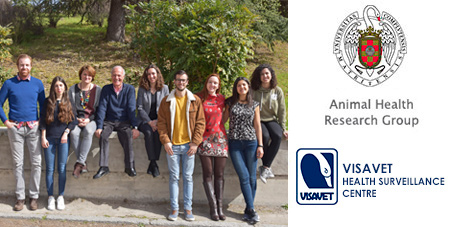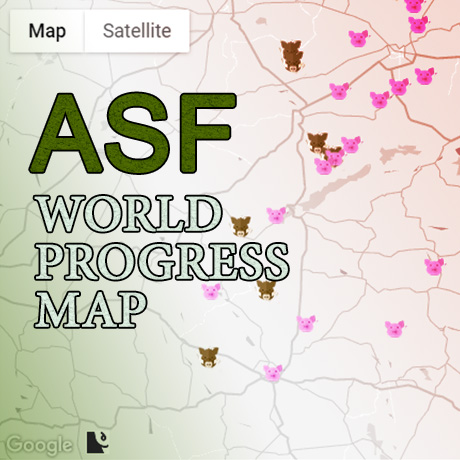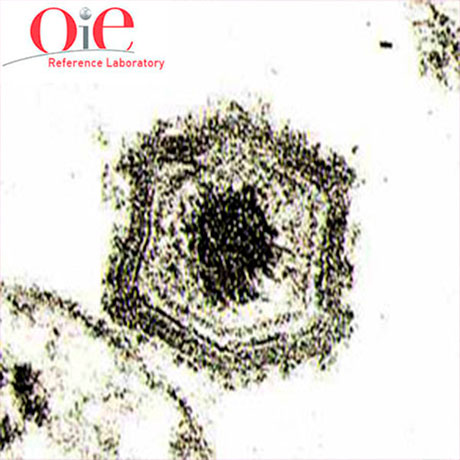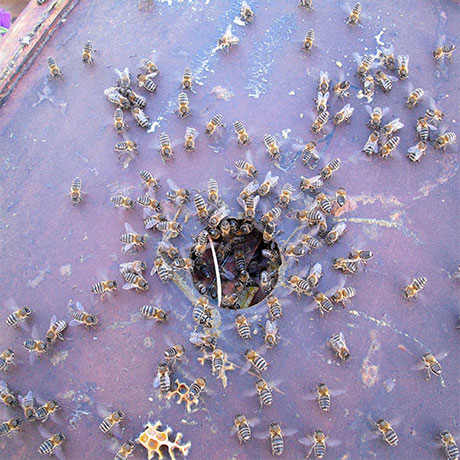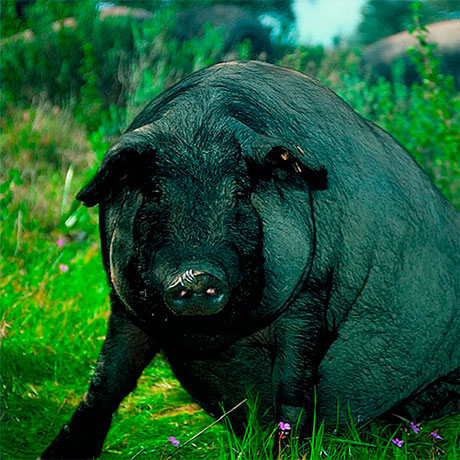"They will not sacrifice animals or close farms by the SBV"
 After the first case in Spain of Schmallenberg virus, found in Hinojosa del Duque, José Manuel Sánchez-Vizcaíno discusses their impact on the sector in this interview to ABC.
After the first case in Spain of Schmallenberg virus, found in Hinojosa del Duque, José Manuel Sánchez-Vizcaíno discusses their impact on the sector in this interview to ABC.
José Manuel Sánchez-Vizcaíno << They will not sacrifice animals or close farms by the SBV>>. ABC.es.
First case of the Schmallenberg virus in Spain
Spain notifies the first outbreak of Schmallenberg disease.
The Spanish Ministry of Agriculture, Food and Environment (MAGRAMA) made official on March 13th, 2012 the declaration of the first case of Schmallenberg virus (SBV) infection in Spain. This first outbreak occurred in Cordoba (Andalusia), in the location of Hinojosa del Duque.
On March 5th, 2012 sheep foetus was born with congenital lesions compatible with SBV infection, presenting arthrogryposis, kyphosis, lordosis and cerebellar hypoplasia. The farm where this malformation was found is extensive and mixed, with a census of 644 sheep and 12 goats. According to the epidemiological survey, similar cases in the surroundings have not been detected so far. However, it is noted that this birth occurred at the beginning of the calving season, so special attention must be paid to detect any compatible case.
Samples were taken from the brain and spleen of the malformed lamb and sent to the Central Veterinary Laboratory (LCV) of Algete in order to perform the appropriate diagnostic techniques. Therefore, on March 12th, 2012 this National Reference Laboratory communicated to the national authorities that the samples had tested positive by RT-PCR.
With respect to the affected region, located in the Valley of the Pedroches, we know that since June 2011 it has received 30 movements of cattle and 12 of sheep from the affected European areas, the virus may have been carried in an animal infected with these consignments.
The rapid confirmation of this disease is mainly due to the application since early February 2012 of the National Programme for Epidemiological Surveillance against Schmallenberg Virus. Thanks to the implementation of this plan, sanitary authorities may keep track of new cases that may arise and establishment of early sanitary measures.
Víctor Rodríguez Prieto & José Manuel Sánchez-Vizcaíno
SUAT-UCM
Section of sanidadnimal.info dedicated to Schmallenberg virus (SBV)
News in the media (Spanish texts)
Diario abc: Detectado el primer caso en España del virus de Schmallenberg.
EFEagro: Primer caso del virus "Schmallenberg" en España.
Albeitar: Sánchez Vizcaíno espera nuevos casos del virus Schmallenberg en España.
El diario de Córdoba: El Gobierno recuerda que la enfermedad no afecta a personas.
El diario de Córdoba: Agricultura detecta un caso del virus Schmallenberg en una explotación de Hinojosa.
Notable increase in the affection of farms with the Schmallenberg virus
 The OIE reported last March 9, 2012 a new notification, updating the situation in France against the infection by the Schmallenberg virus (SBV). Summing these data, 1,204 farms are affected by the SBV in Europe (Figure 1). As shown in the map, outbreaks have been an enormous expansion in France, reaching regions that are only 350 km from the border with Spain.
The OIE reported last March 9, 2012 a new notification, updating the situation in France against the infection by the Schmallenberg virus (SBV). Summing these data, 1,204 farms are affected by the SBV in Europe (Figure 1). As shown in the map, outbreaks have been an enormous expansion in France, reaching regions that are only 350 km from the border with Spain.

Fig. 1: Distribution of the infection by the Schmallenberg virus in Europe
Source: self-elaboration from data from the OIE-WAHID database up to March 9, 2012.
Apart from France, Germany and the Netherlands are the other two countries with the highest rates of infection with this virus. In all three, the sheep industry is worse off. In fact, among the three countries there have been 948 outbreaks in sheep (nearly 80% of total). With regard to cattle, these farms are not suffering so many malformations. In addition, the diagnosis of many samples from malformed fetuses (mostly done by RT-PCR) is testing negative. Therefore, the Dutch Central Veterinary Institute (CVI) has conducted a serological survey of 1,123 samples collected from dairy cows between November 2011 and January 2012 in order to ascertain the SBV status of the herd.
The study has resulted in an overall prevalence of 70%, on some farms reaching almost 100%. Firstly, there is a need for sensitive and affordable serological techniques for establishing the actual distribution pattern of this virus in the European Union. In addition, this shows that the virus has been actively circulating during the months of higher activity of the vector. In fact, a Belgian study conducted in pools of insects captured in late 2011 found the VSB in at least two vectors: Culicoides obsoletus and C. dewulfi. This shows that at least two species of midges are involved in the VSB transmission. Although more studies are necessary, important steps seem to be taken to unravel not only the past movement of the virus but also the present activity in order to ultimately know the real impact that this infection may lead.
All the information about Schmallenberg Virus is available at Emerging diseases online
Víctor Rodríguez Prieto & José Manuel Sánchez-Vizcaíno
SUAT-UCM
Source:
ProMED mail. Schmallenberg virus - Europe (25): Netherlands, serosurvey. File Number: 20120309.1065831.
ProMED mail. Schmallenberg virus - Europe (26): vector, morphology. File Number: 20120311.1066949
40th Symposium EAAM 2012
 The European Association for Aquatic Mammals (EAAM) held its 40th Symposium and the professor Sánchez-Vizcaíno speaks about "New Advances in the diagnosis of viral diseases in dolphins".
The European Association for Aquatic Mammals (EAAM) held its 40th Symposium and the professor Sánchez-Vizcaíno speaks about "New Advances in the diagnosis of viral diseases in dolphins".
- Oral communication, Dr. Sánchez-Vizcaíno "New Advances in the diagnosis of viral diseases in dolphins".
- Oral communication, Consuelo Rubio "Unusual striped dolphin mass mortality episode related to cetacean morbillivirus in the Spanish Mediterranean Sea".
- Oral communication, Mar Melero "Elevated presence and variability of Herpesvirus in cetaceans stranded during 2010 and 2011 in the Region of Valencia".
- Póster, Jose Luis Crespo "Use of radiographic parameters for age estimation in stranded cetaceans".
Sánchez-Vizcaíno explains what we know about the Schmallenberg virus
 José Manuel Sánchez-Vizcaíno explains what we know about theSchmallenberg virus the last February 23rd at the College ofVeterinarians of Madrid.
José Manuel Sánchez-Vizcaíno explains what we know about theSchmallenberg virus the last February 23rd at the College ofVeterinarians of Madrid.
News in COLVEMA and ![]() presentation (Spanish).
presentation (Spanish).
Other media (Spanish): Albéitar Portal Veterinaria / Agromeat / Feagas / Agroline
Meetings on Virus Schmallenberg
 During this month of February Professor Sanchez-Vizcaino will give two lectures on "Schmallenberg virus".
During this month of February Professor Sanchez-Vizcaino will give two lectures on "Schmallenberg virus".
On 22 February in Seville in the Official College of Veterinarians of Seville, entitled "Virus Schmallenger: Review of the known aspects of this disease. Potential risk of entry into our country." Program and poster (Spanish text)
23rd in Madrid organized by the College of Veterinarians of Madrid. More info



